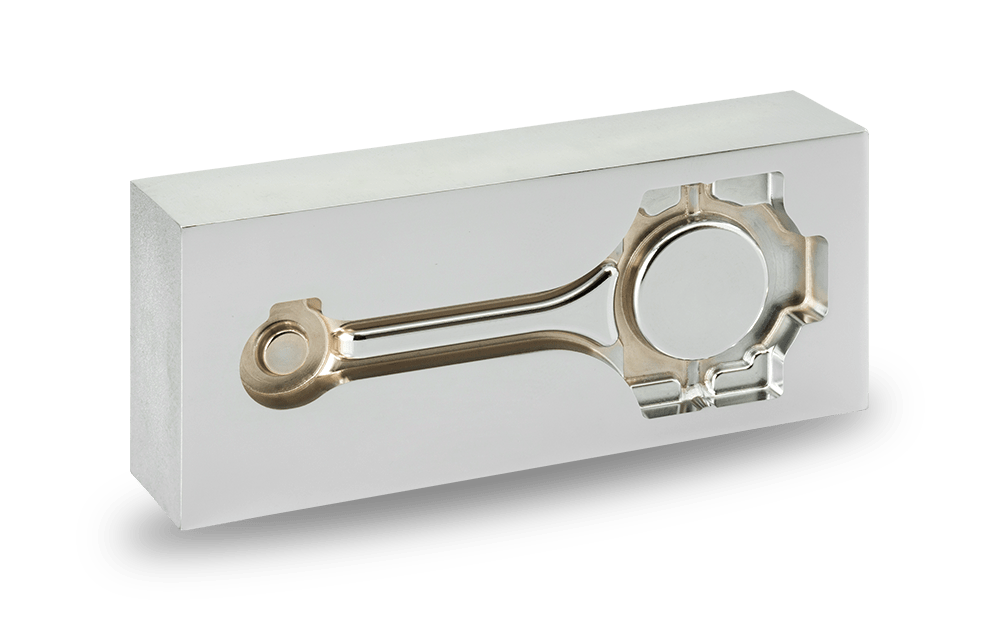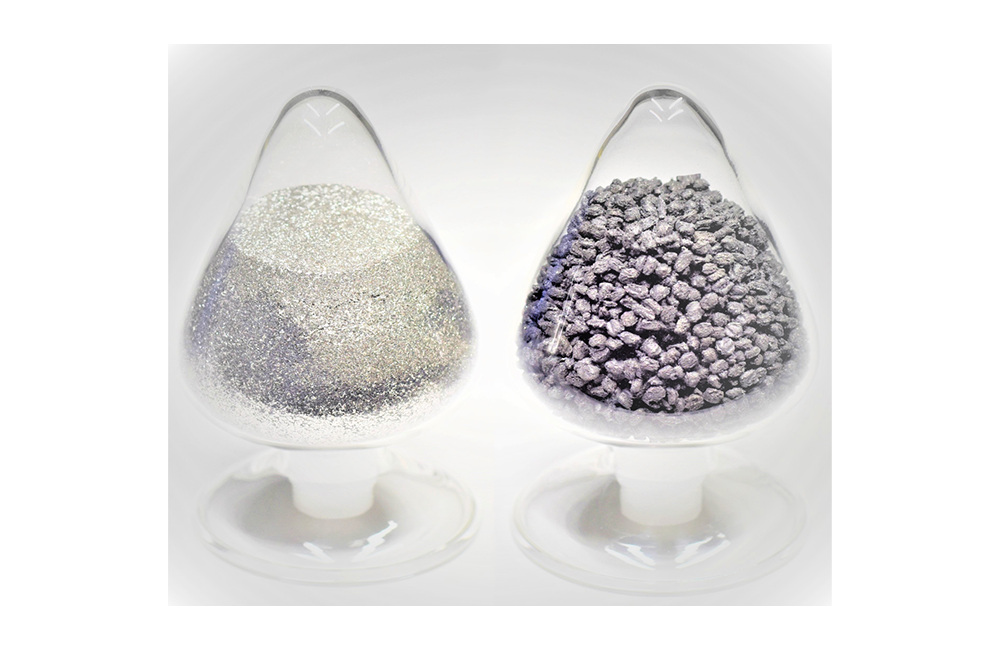Font Size
Shape-memory alloy
Shape memory alloy(KIOKALLOY) excels in high-strength, corrosion resistance
KIOKALLOY, a Ni-Ti alloy, is superior for various reasons such as its strength and corrosion resistance. KIOKALLOY has been born out of Daido’s abundance of experience in working with special steel and high-purifying materials through original processes such as our melting furnace and vacuum arc furnace.
Features
- It can be set at a wide range of “recovery temperature”. (10℃~100℃)
- Its corrosion resistance is the same as titanium and titanium alloy.
- Its tensile strength is about 150kgf/mm2.
- Its super elasticity effect means that large distortions are easily corrected. Up to 8% of its shape can be recovered in the temperature zone beyond the shape recovery temperature.
Applications
| Shape-memory effect | Super-elasticity effect |
| Pipe joint(radioactive waste transport pipe) | Wire (brassiere, corset, drool bib for baby, frame of hat) |
| Dental root (inserted into the bone and fixed) | Frame of glasses |
| Electrical connector(Utilization of temperature up of inferior contact point) | Teeth-straightening(crownwork, arch wire) |
| Automatic closing mechanism of window | Catheter lead wire for introducing X-ray contrast medium (follow flexibly in vessel) |
| Air conditioner sensor flap | Rehabilitation apparatus for forming |
| Spring cellar | |
| Antifreezing valve (turn the faucet on lowering temperature) | |
| Fan clutch (stop operation at low temperature) | |
| Temperature alarm (alternative bimetal) | |
| Medical implant (expanding vessel) |
Chemical composition and shape-recovery temperature
| Item | Ni | Ti | Co | Cu | Shape-recovery temperature |
|
Ni-Ti alloy (KIOKALLOY-R) |
54~56 | Residual Bal. | - | - | 20~100℃ |
|
Ni-Ti-Co alloy (KIOKALLOY-S) |
53~55 | Residual Bal. | 1~3 | - | -30~30℃ |
|
Ni-Ti-Cu alloy (KIOKALLOY-T) |
47~50 | Residual Bal. | - | 5~9 | 40~70℃ |
- Shape-recovery temperature varies depending on forming and heat treatment conditions.
Mechanical properties
| Item | Ni-Ti alloy | Ni-Ti-Co alloy | Ni-Ti-Cu alloy | |
| Martensitic phase |
Tensile strength MPa (kgf/mm2) |
1175~1370 (120~140) |
1370~1570 (140~160) |
1175~1765 (120~180) |
|
Yield strength MPa (kgf/mm2) |
~196 (~20) |
~294 (~30) |
68~98 (7~10) |
|
| Elongation % | ~50 | ~50 | ~20 | |
|
Horizontal modulus of elasticity MPa (kgf/mm2) |
7845~9800 (800~1000) |
9800~13730 (1000~1400) |
0~4900 (0~500) |
|
| Austenitic phase |
Tensile strength MPa (kgf/mm2) |
1075~1175 (110~120) |
1275~1370 (130~140) |
1175~1765 (120~180) |
|
Yield strength MPa (kgf/mm2) |
390~785 (40~80) |
490~980 (50~100) |
390~785 (40~80) |
|
| Elongation % | ~20 | ~20 | ~20 | |
|
Tensile strength MPa (kgf/mm2) |
17650~21575 (1800~2200) |
19600~24500 (2000~2500) |
19615~27460 (2000~2800) |
|
- Mechanical properties vary depending on heat treatment conditions and service temperatures.
Comparison of physical properties
| Metal |
Density (g/cm3) |
Melting point (℃) |
Linear expansion coefficient (×10-6/K) |
Specific heat (J/(kg・K)) |
Thermal conductivity (W/m/℃) |
Electric resistance (Ωm) |
|
Ni-Ti (Austenitic phase) |
6.5 | 1250 ~1280 | 10 | 440 | 12.1 | 80~100 |
|
Ni-Ti-Co (Austenitic phase) |
6.5 | 1250 ~1280 | - | 470 | 12.7 | - |
|
Ni-Ti-Cu (Austenitic phase) |
6.4 | 1250 ~1280 | - | 460 | 13.5 | - |
| Titanium | 4.5 | 1668 | 8.4 | 520 | 17.1 | 55 |
| Nickel | 8.9 | 1453 | 15 | 460 | 92.0 | 9.5 |
| Iron | 7.9 | 1530 | 12 | 460 | 62.8 | 9.7 |
| SUS304 | 7.7 | 1400 ~1420 | 17 | 500 | 16.3 | 72 |
| Copper | 8.89 | 1083 | 17 | 380 | 385.0 | 1.724 |
- Physical properties, except for density and melting point of Ni-Ti alloy vary depending on temperature.
















